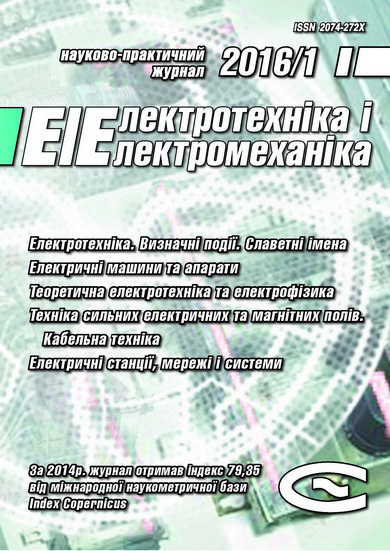INVESTIGATION OF HIGH-CURRENT INTERRUPTING CONTACTS WORKING SURFACES MECHANICAL INTERACTION NATURE
DOI:
https://doi.org/10.20998/2074-272X.2016.1.02Keywords:
electrical contacts, contact surfaces, deformation of contact materials, method of holographic interferometryAbstract
Introduction. The nature of the interaction of high-working surfaces of the electrical contact uniquely affects their performance. By the failure of the contacts in the main drive processes resulting from complex destructive factors affecting their performance. However, not all processes are studied in detail and give in modeling. The purpose of the paper is to show the possibility of using the method of holographic interferometry to estimate the plastic deformation in the zone of contact interaction. One of the significant factors affecting the work of the contact pair is the compressive force of the contact surfaces. Compression discontinuous contact is directly connected with the processes of elastic and plastic deformation of the contact material, which is particularly evident in the contact details of the powder or composite materials. The paper focuses on the plastic deformation of the surface layers of discontinuous contact in circuit, it is believed that it is directly related to the mechanism of conductivity of contacts. As shown, a significant effect on the deformation of the contact surfaces and renders the working environment, in particular transformer oil. Methodology. Assessing the impact of compression forces on the deformation of the contact surface was conducted experimentally using the method of holographic interferometry. Results. Experimental studies, which indicated that the compact and powder materials plastic deformation in and around the area microcontacts simplistically stated that requires experimental verification. A method for evaluating the state of stress, which affects the formation and destruction of the local contact spots. Practical value. Using the experimental method of determining the movement of the contact region allows you to optimize discontinuous contacts from composite and powder materials.References
Taev I.S. Elektricheskie apparaty upravleniia [Electrical control apparatus]. Moscow, Vysshaia shkola Publ., 1984. 243 p. (Rus).
Butkevich G.V. Osnovy teorii elektricheskikh apparatov [Basic theory of electrical apparatus]. Moscow, Vysshaia shkola Publ., 1970. 600 p. (Rus).
Basov K.A. ANSYS v primerakh i zadachakh [ANSYS in examples and tasks]. Moscow, Komp'iuter Press Publ., 2002. 224 p. (Rus).
Merl V. Elektricheskii kontakt. Teoriia i primenenie na praktike [Electrical contact. Theory and practical application]. Moscow-Leningrad, Gosenergoizdat Publ., 1962. 82 p. (Rus).
Myshkin N.K. Elektricheskie kontakty [Electrical contacts]. Dolgoprudnyi, Intellekt Publ., 2008. 560 p. (Rus).
Kashcheev V.N. Protsessy treniia v zone friktsionnogo kon-takta metallov [Friction process in metal contact frictional zone]. Moscow, Mashinostroenie Publ., 1978. 211 p. (Rus).
Ginzburg V.M., Stepanova B.M. Golografiia. Metodyiapparatura [Holography. Methods and equipments]. Moscow, Sovetskoe radio Publ., 1974. 376 p. (Rus).
Downloads
Published
How to Cite
Issue
Section
License
Copyright (c) 2016 O.G. Volkova, L.B. Zhornyak

This work is licensed under a Creative Commons Attribution-NonCommercial 4.0 International License.
Authors who publish with this journal agree to the following terms:
1. Authors retain copyright and grant the journal right of first publication with the work simultaneously licensed under a Creative Commons Attribution License that allows others to share the work with an acknowledgement of the work's authorship and initial publication in this journal.
2. Authors are able to enter into separate, additional contractual arrangements for the non-exclusive distribution of the journal's published version of the work (e.g., post it to an institutional repository or publish it in a book), with an acknowledgement of its initial publication in this journal.
3. Authors are permitted and encouraged to post their work online (e.g., in institutional repositories or on their website) prior to and during the submission process, as it can lead to productive exchanges, as well as earlier and greater citation of published work.





